It’s good to be back on the Twisted Stave blog. I’ve been busy preparing for a Newfoundland moose hunt, but here in upstate New York it’s hard to ignore that fall and deer hunting are right around the corner. Mornings have been crisp and dewy, sumac and Virginia creeper have already turned crimson, and at night, far above, I hear the nocturnal flight calls of migrating thrushes. This has my mind bending toward the glimmer of a “shine pole” and “b-r-r-r-t” of a rutty buck. In that vein, I thought maybe we could talk a little about deer hunting. Below is Part 1 of a 2 part series on hunting whitetail deer feeding and bedding areas. Much of this is excerpted from my book, “A Traditional Bowhunter’s Path.”
Like most wildlife species, a white-tailed deer’s life cycle is driven by three primary forces: food, security, and reproduction. Any white-tail hunting book worth its salt covers these topics in detail, but in my experience there are often misconceptions and nuances in this material that aren’t brought to light. I want to focus on specific aspects of deer feeding and bedding (security) behaviors to better understand how we can be successful traditional bowhunters. Specifically, I want to dispel the notion that hunting bedding areas should be avoided at all cost and take some time to talk about the importance of old apple orchards and other concentrated food sources in not only providing nutrition, but shaping deer behavior and movement patterns.
[nzs_heading heading=”2″] Part 1 – Hunting Whitetail Deer Bedding Areas [/nzs_heading]
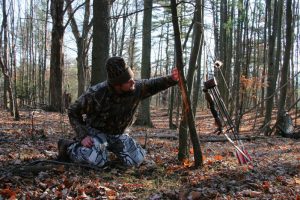 In my early years as a bowhunter, I concentrated most of my efforts on food sources, travel routes, and natural funnels. I shied away from bedding areas because I was afraid of disturbing deer, especially bucks, in or near their sanctuaries. During those years I killed many does and young bucks, but mature bucks always seemed to elude me…I guess in some ways they still do, but that’s why I keep coming back! My strategy was to hunt the food sources and trails farthest from bedding areas early in the season and work my toward the buck sanctuaries as the season progressed. I heeded the published advice of successful whitetail hunters and kept a safe distance from these “sensitive” bedding areas, even during the rut.
In my early years as a bowhunter, I concentrated most of my efforts on food sources, travel routes, and natural funnels. I shied away from bedding areas because I was afraid of disturbing deer, especially bucks, in or near their sanctuaries. During those years I killed many does and young bucks, but mature bucks always seemed to elude me…I guess in some ways they still do, but that’s why I keep coming back! My strategy was to hunt the food sources and trails farthest from bedding areas early in the season and work my toward the buck sanctuaries as the season progressed. I heeded the published advice of successful whitetail hunters and kept a safe distance from these “sensitive” bedding areas, even during the rut.
Over the years I developed my own hunting style based on observed deer behavior, my own hunting experiences, and the literature. This style includes setting up near, and sometimes within, bedding areas during all phases of the season, which I find works very well for orchestrating close shots at relaxed deer.
Think about it. Where do you feel most comfortable and secure? In what room are you bold enough to dance to “That Old Time Rock-n-Roll” in your underwear? Your bedroom, right? Hmm…maybe we shouldn’t go there…I just had an image of Gene Wensel bouncing up and down on his bed! Okay, where were we? The same need for security is true for deer. They feel most secure and confident in their bedding areas. Even in areas with little hunting pressure, mature bucks are very reluctant to stray from their sanctuaries during legal shooting hours.
A recent study of GPS tagged deer in Pennsylvania found that when hunting season began, mature bucks (>2.5 years old) responded to increased human activity by moving out of their core areas and into sanctuaries that were far from roads, had thick brushy cover, or were at high elevations. As a consequence, only 20 percent of these bucks were taken by hunters.
My question is “why hunt where mature bucks aren’t just because you might spook them by hunting where they are?” In areas of the country that experience heavy hunting pressure someone else is likely to disturb or even kill a buck if you don’t—so why wait? That’s not to say bedding areas can be hunted haphazardly. But, with the appropriate approach you can effectively hunt many bedding areas without pushing bucks into the next county. So, how do you go about finding and hunting these buck sanctuaries?
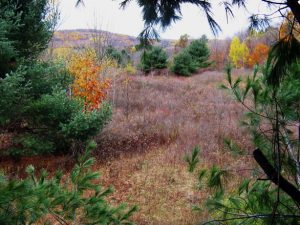
Old farm fields with brush cover provide excellent whitetail deer bedding areas.
Regularly used whitetail deer bedding areas take on different forms depending on the landscape you’re hunting and the habitat that’s available. Most bedding areas, however, have two things in common—they are relatively undisturbed and contain protective cover. In Gene and Barry Wensel’s book Treestand Strategies, they suggest that bowhunters would do well to “Think Brush.” This concept is especially true when looking for buck sanctuaries. My hunting areas in the Finger Lakes region of New York fall roughly into three categories—remote forest, abandoned farmland, and active farmland. Bedding areas in remote forest aren’t always obvious. Some places to investigate (during the off season), include thick brushy areas created by past timber harvesting, conifer stands, brushy creek bottoms, natural blowdowns, brushy fingers of high ground, benches running parallel with ridges, and steep slopes. In abandoned farmland, look for old fields that are dense with shrubs and saplings. These old fields are particularly attractive to deer if they are associated with cattail marshes, dogwood thickets, or food sources such as old apple trees. Other top-notch bedding areas include aspen thickets, cedar groves, overgrown orchards, and undisturbed golden rod fields. In active farmland, bedding areas are usually found in standing corn, wet areas that are unfarmed, grassy waterways, and undisturbed woodlots.
Once you’ve located some bedding areas and potential stand sites, it’s time to start scouting. My favorite scouting times are winter and early fall. There are many reasons to scout in winter, but the most important is visibility. Bedding areas typically have heavy cover and the presence of foliage during spring and summer conceals important features such as subtle topographic changes, funnels, trails, and old rubs and scrapes. In winter you can penetrate dense thickets to determine why deer travel the way they do within and around the bedding area. From the outside, bedding areas often look uniform, but they frequently contain wet areas, high ground, openings, and food sources that all serve to influence deer behavior. Furthermore, getting inside bedding areas also allows you to link concentrations of rubs with specific bedding sites so that you can pin-point a buck’s preferred beds. Scouting in winter gives you a sense of the big picture, while early fall scouting functions to narrow your focus.
When scouting in early fall, I typically walk the edges of whitetail deer bedding areas using maximum stealth. Pay close attention to the wind, wear rubber boots, and avoid unnecessary contact with vegetation. I try to scout on windy or rainy days to help cover my noise and scent. Scouting at this time can reveal rubs and scrapes along a buck’s preferred entrance and exit routes to the bedding area. Look for these signs in secluded locations where the bedding area borders forest or some other habitat that provides transitional cover to feeding sites. Also, look for places where the thick, brushy habitat of the bedding area extends into adjacent forest and fields. These brushy peninsulas serve as travel corridors for wary bucks that are reluctant to leave protective cover until after dark.
Not all bedding areas are created equal. Some are relatively easy to hunt while others are best left alone. Unless I have very stealthy entrance and exit routes, I avoid hunting bedding areas that are less than one acre in size. You are less likely to alarm deer if you concentrate on large patches with lots of core area for bucks to remain undisturbed. Remember, however, that during the early part of the season, unpressured bucks often bed near the edge, thus necessitating a completely silent approach regardless of bedding area size. Place and prepare your treestands and ground blinds well before the season begins. The shape of the bedding area is also important. When hunting long, narrow bedding areas such as a brushy fencerow or grassy waterway, it’s best to hunt only the ends or, if hunting the middle, approach your stand site at a right angle to the bedding area to avoid disturbing bedded deer as you approach. If you knowingly bump a buck from his bed, back off for a few days and then set up on an alternate exit trail.
Timing can be critical. I generally stick to afternoon hunts when restless bucks are exiting their sanctuaries to feed. I’ll only attempt morning hunts if I’m relatively certain that I can slip into a stand undetected. In my opinion, one of the best times to hunt is the first few weeks of the season when unpressured bucks are routinely exiting their bedding areas before dark. During the rut late morning is a great time to set up on trails running parallel to a bedding area, as bucks cruise these trails to scent check the cross trails for estrous does.
Food sources within or adjacent to bedding areas can be absolute hotspots, as bucks will often feed near their sanctuaries at almost any time of day. In forested areas I look for acorn-laden oaks, and in farmland crabapple trees and old apple orchards can be dynamite. One of my favorite stands is located amongst three old apple trees about 50 yards inside a large dogwood thicket. If there are no key features, such as food or obvious funnels to set up on, I typically work my way around the edge of the bedding area, hunting the secondary exit trails, especially those containing large rubs.
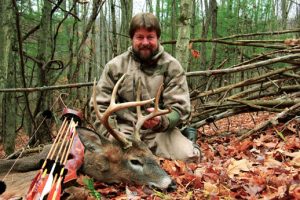 The keys to successfully hunting bedding areas are to: 1) scout smart by using aerial photos or Google maps, and limiting your intrusions to winter and early fall, 2) minimize disturbance by selecting large bedding areas with plenty of core area to harbor bucks, 3) hunt smart by using the weather, especially the wind, to hide your presence, 4) maximize shot opportunities by setting up on key features such as food and natural funnels, and 5) rest bedding areas by backing off after knowingly disturbing deer. Give it a try. It’s fun, productive, and the whitetail gods won’t strike you down for not following the “rules.” Click here for more great posts by Ron Rohrbaugh!
The keys to successfully hunting bedding areas are to: 1) scout smart by using aerial photos or Google maps, and limiting your intrusions to winter and early fall, 2) minimize disturbance by selecting large bedding areas with plenty of core area to harbor bucks, 3) hunt smart by using the weather, especially the wind, to hide your presence, 4) maximize shot opportunities by setting up on key features such as food and natural funnels, and 5) rest bedding areas by backing off after knowingly disturbing deer. Give it a try. It’s fun, productive, and the whitetail gods won’t strike you down for not following the “rules.” Click here for more great posts by Ron Rohrbaugh!
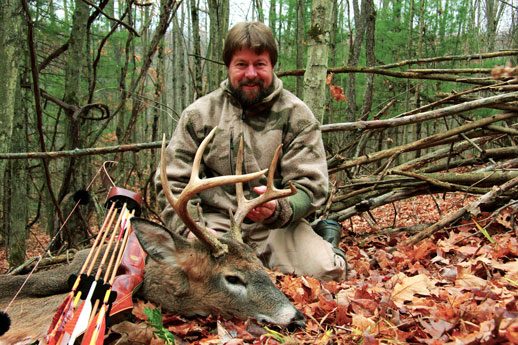
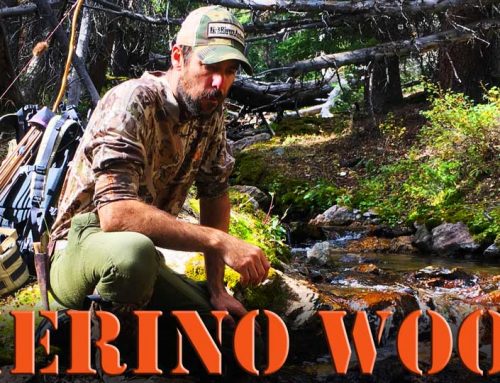
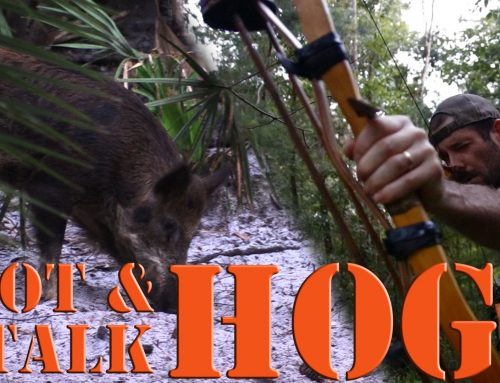
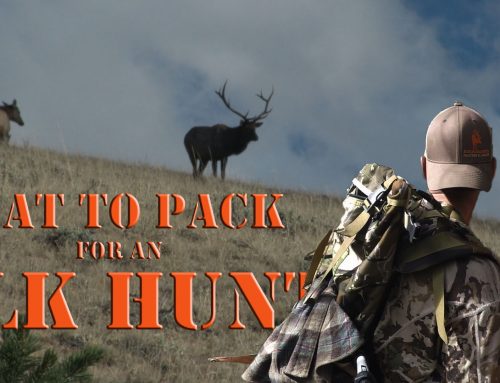
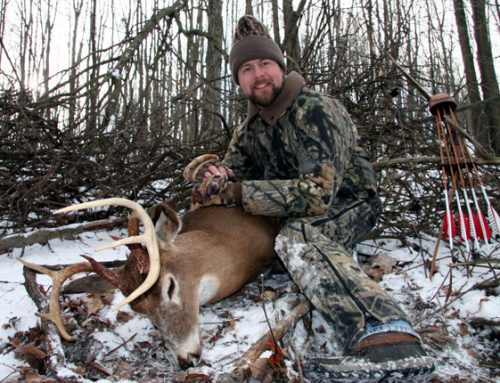
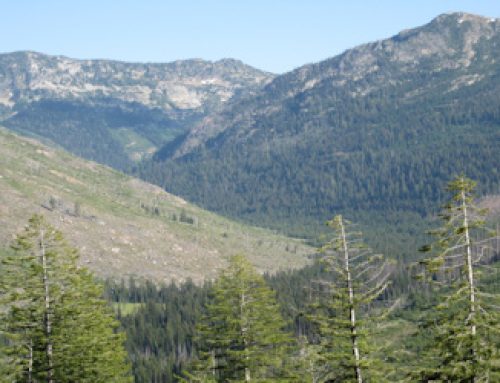
Both you and Clay are great inspiration. Great reading!
If you do get blown out of a bedding area, how long do you wait to go back and hunt it?
I really enjoyed reading this. Thanks for passing on your observations
Great article and looking forward to Part 2.
Checkout the Cherokee Legends – The Spirit of Little Deer, great for all hunters to hear.
https://www.youtube.com/watch?v=MiSbnziJ2uo
You and your family have a blessed week!!!
Excellent article !
Ring primarily a ground hunter this information is priceless. I’m a firm believer in hunting deer , buck or doe wherever your chances to see deer and get a undetected heavy arrow into the chest cavity of a deer are high . Bedding areas are no diff . One of my favorites besides swamp islands!
Keep educating and exposing ppl to as much information as possible!!!😊
Ron I want to address the hunting in the bedding portion of your blog. I am no different than a lot of traditional bow hunters I guess. I am a meat hunter and like our fore fathers and Native Americans, I want to feed my family. There is not a lot of food value in the antlers and my walls are for pictures. So with that being said if the deer I am after is in a bedding area that is where I am going. We don’t hunt with a long range weapon so we have to get real close. We as traditional bow hunters are hunters not shooters.
Thanks for the blog.
Many thanks to everyone for your kind words. I love bowhunting for whitetails and I’m glad that my thoughts and experiences can be helpful to others. To keep thins organized, I’m going to respond to Dave’s and Ed’s thoughts in separate comment boxes.
Keep the Traditional Spirit Alive!
Ron
Dave, how long to wait depends on the sex of the animal being disturbed and the time of year. My comments here are relevant to situations where a deer fully sees and/or smells you and is spooked from the area. Bumping a deer because you broke a stick under foot is less criminal and I wouldn’t worry about it as much. Mature does are always sensitive and if you disturb them, I would wait 5-7 days before returning, unless you are hunting heavily used public land, then I might only wait 3-5 days. I would do the same for bucks outside of the rut, as they are using their bedding areas as a home-base, like we use our houses. During the core of rut, bucks use bedding areas more like hotel rooms. They are constantly on the move and will bed in almost any secure location. In this case, I would wait only 3 days before going back and maybe not wait at all if the rut is really going bonkers. That said, if the rut is in full swing, hunting habitat or terrain funnels is probably a better technique anyway.
Ed, I understand exactly where you are coming from and I agree. For protein, my family lives on venison and other assorted game meats. We eat 4-5 deer per year, so killing for sustenance is the most important thing to me. That said, I see no problem with focusing on mature animals while securing meat. I enjoy nothing more than trying to figure out a mature deer’s movement patterns or specific behaviors that will allow me to fairly take that animal. The difference between a 1.5 year old buck and a 3.5 year old buck is like a motor scooter versus a Harley Davidson. I enjoy the huge challenge of the Harley Davidson compared to the lesser challenge of the motor scooter. That said, you won’t find my house covered in trophy taxidermy. For me, it’s about the mental and physical challenge of taking an older animal, not about the trophy it represents. Take a look at my book, “A Traditonal Bowhunter’s Path,” and you’ll find many photos of does and discussions about the importance of acquiring and using meat.
[…] is part 2 of a two part series on hunting white-tailed deer in feeding and bedding areas. See part 1 for brief […]